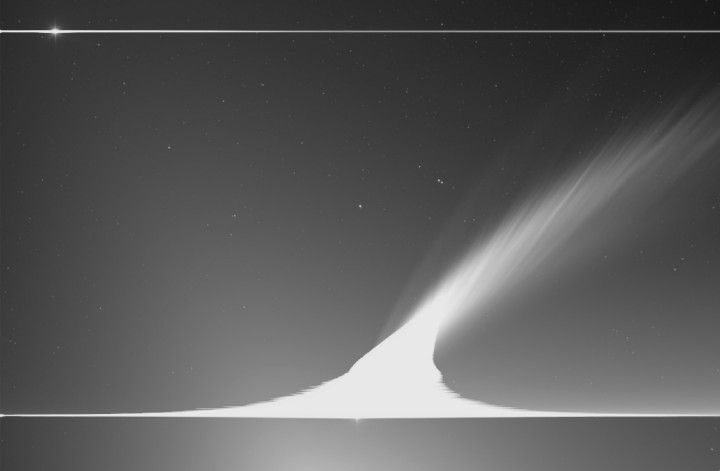Explanation: Outstanding in planet Earth's sky early this year, Comet McNaught is captured in this view from the STEREO A spacecraft. McNaught's coma is so bright, it blooms into the long horizontal stripe at the bottom of the field. Brilliant Venus, near the top left corner, also produces a severe horizontal blemish in the digital image. But the sensitive camera does accurately record the striations in McNaught's famous dust tail along a region stretching over 30 million kilometers toward the top right of the field of view. A separate, fainter, arching tail just to the left of the dust tail was initially thought to be an example of a common ion tail, formed by electrically charged atoms carried away from the comet by the solar wind. However, detailed modeling indicates that tail is actually due to neutral iron atoms pushed out by the pressure of sunlight -- the first ever detected neutral iron tail from a comet. The iron atoms are thought to originate in dust grains from the comet nucleus that contain the iron-sulfur mineral troilite (FeS).
1999 2000 2001 2002 2003 2004 2005 2006 2007 2008 2009 2010 2011 2012 2013 2014 2015 2016 2017 2018 2019 2020 2021 2022 2023 2024 2025 |
Yanvar' Fevral' Mart Aprel' Mai Iyun' Iyul' Avgust Sentyabr' Oktyabr' Noyabr' Dekabr' |
NASA Web Site Statements, Warnings, and Disclaimers
NASA Official: Jay Norris. Specific rights apply.
A service of: LHEA at NASA / GSFC
& Michigan Tech. U.
|
Publikacii s klyuchevymi slovami:
Comet McNaught - comet tail - Kometa MakNota - kometnye hvosty
Publikacii so slovami: Comet McNaught - comet tail - Kometa MakNota - kometnye hvosty | |
Sm. takzhe:
Vse publikacii na tu zhe temu >> | |
